A Slightly Obsessed Movie Theme Special!
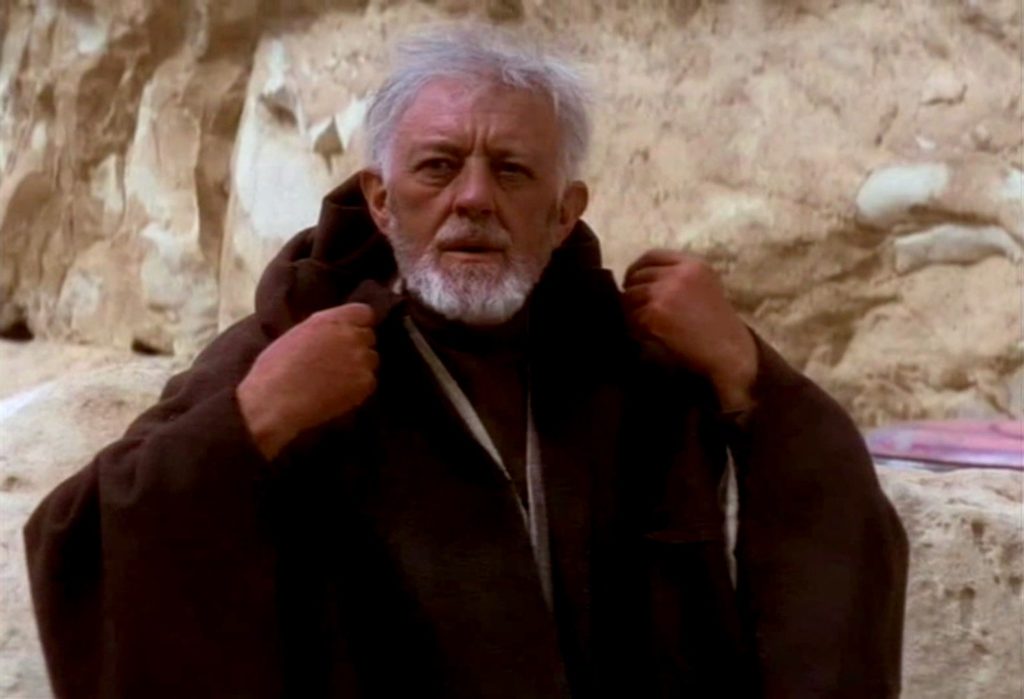
Hello there!
(And if you happen to recognize that as Obi-Wan Kenobi’s greeting to R2-D2 in Stars Wars: Episode WhateverTheHeck, I can safely say we’re on the same page, friend… Or, um, ‘frame’, as it were.)

me at one week
The accompanying two photos are of Yours Truly, aged one week and 3 years old, respectively. The one on the left shows me flanked by big-headed plaster figures of Messrs. Laurel & Hardy (the former of whom sits by my desk here as I write, minus a nose) and the one on the right is of me at the Circus World Museum in Baraboo, WI with a sleeping baby tiger on my lap (back when they had the insurance for that sorta thing).

me. three years old
As you also might tell, even at these early ages I somehow possessed enough camera-sense not to peer directly into the lens. (Indeed, the only pictures of me looking directly at the camera until I was 4 or so are those in which my parents physically turned my head towards it.) So, apparently blessed from the very beginning of my life by an interest in comedy and entertainment, I naturally gravitated towards TV, comics, and the movies.
And thus began the lifelong passion and guiding light of an Slightly Obsessed Moviewatcher!
…
To preface the ‘why’ of these write-ups, I’ll simply relate, apropos of nothing really, that a few years back I was an English instructor in the Gyeonggi Province of South Korea. My long tenure in the position was such that, by the time my last contract began in 2011 I had accumulated such a vast reservoir of class material that, after a solid day of work, I had finished the entire curriculum for all three of my class sections before the term had even begun.
Now, while mostly irrelevant information for this series of movie write-ups/reviews, the sole relevant bit of information is that for an entire year–August 2011 to August 2012–I was left with an hour of free time, both in the morning and afternoon, that I actually did not need. So, understandably bored between teaching hours, I randomly decided one morning in late September of 2011 to start throwing out movie suggestions on my Facebook page. As the Halloween month was fast approaching, I thought a series of horror movie write-ups might be nice. I called it “31 Nights of Halloween!”
Here was my first in that series:
1ST NIGHT: NOSFERATU, A SYMPHONY OF HORROR (1922, Germany, dir. F.W. Murnau)
The first ever screen Dracula, unofficially adapted from Bram Stoker’s classic novel, is also probably the finest. No version since has matched this silent film for its shadowy compositions and dream-like air of dread. Max Schreck’s “Count Orlok”–pale and emaciated, with rodent-like teeth and long sharp talons for hands; more rat or spider than human–once seen, is not easily forgotten…
And thus, again, to the yawning indifference of my FB pals, it began!
…
These ‘movie thingees’ have definitely grown in the telling over the past few years and, indeed, seem now to encompass a weird, hybrid mix of fanfic, personal anecdotes, and against-the-grain, contrarian viewings of classic (and not so-classic) films. Basically, I could never quite bring myself to write about a movie I didn’t like, and I sincerely hope that my lifelong passion and interest for cinema as The Great Artform of the 20th century (I haven’t quite brought myself around to the 21st century yet) comes through in these write-ups.
EXEGESIS
For my first series of write-ups I thought it would be appropriate on this website to serve up—or perhaps I should just say “serve”—four films that explore the mysteries of the human spirit and denote the nature of the soul. (Without, hopefully, getting too pretentious or anything.) I’m calling it SPIRITUAL SUNDAY.
Post-WWII European films were marked by the words of American reviewers as “challenging,” “rewarding,” “profound” — and consequently in the minds of most American viewers, “boring.” The release of Ingmar Bergman’s The Seventh Seal in 1958 and Federico Fellini’s La Dolce Vita a year later solidified the notion that “foreign = art” and that filmmaking had potentialities beyond a purely commercial-driven medium.
This turned out to be a false construct, as serious criticism contemporary to the release of those movies showed subversive and personal modes of artistic expression being evident all along even within the Hollywood Studio System, but still, the idea that films produced in Italy, France, Sweden, Poland et al. were somehow freer to address more difficult issues of faith, philosophy, psychology, metaphysics et al. holds to this day.
So yeah, the 50s and 60s in European filmmaking were a heady time for deep-thinkers and intellectuals to wield the cudgel of cinematic indignation against crass commercialized Hollywood “product.” Balderdash, to be sure, but without getting *too* profound here, film has a unique potential to depict poetry and mystery, as filmmaker Robert Bresson put it, “between the frames,” that has oft-been unrealized in commercial Hollywood filmmaking. (For fear of boring or alienating its audience, one presumes.)
Again, over the next month, I’ll do my level best to select a few representative examples of what critic/filmmaker Paul Schrader once dubbed “the transcendental style of filmmaking”: a deeper cinematic investigation into the nature of being.
I. THE 400 BLOWS
(1959, France, dir. François Truffaut)
“Oh, I lie now and then, I suppose. Sometimes I’d tell them the truth and they still wouldn’t believe me, so I prefer to lie.”
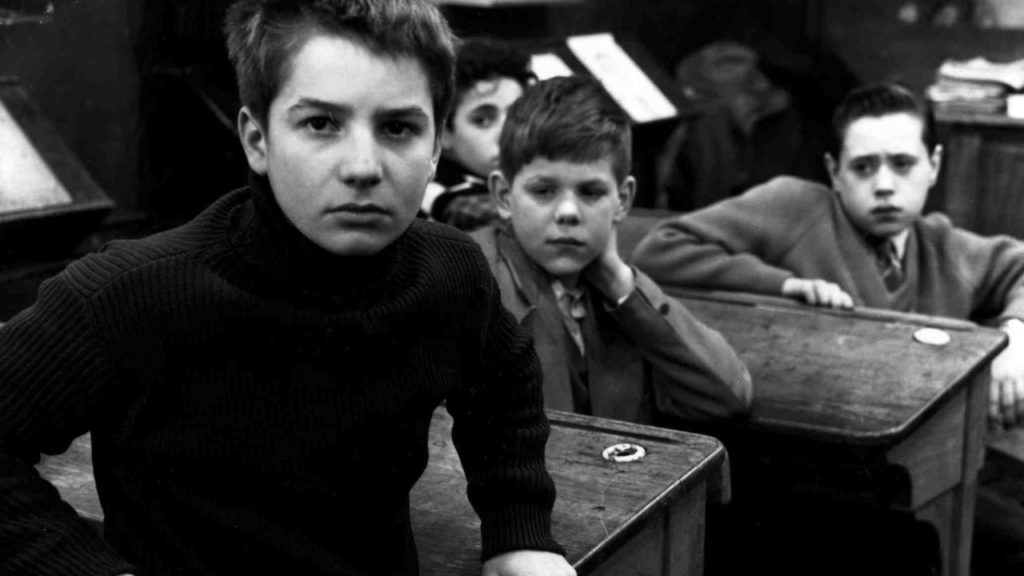
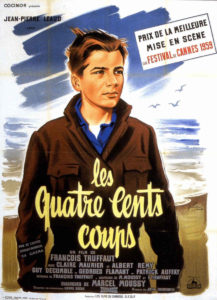 Observation Center for Juvenile Delinquents, Hornfleur-on-the-Seine NW, Subject # 05440232, Dr. Constance Petersen:
Observation Center for Juvenile Delinquents, Hornfleur-on-the-Seine NW, Subject # 05440232, Dr. Constance Petersen:
“Upon interviewing subject Antoine Doinel (Jean-Pierre Leaud), this analyst feels the need to recommend his immediate release.
“The facts are these: neglected by his parents (Claire Maurier, Albert Rémy) and ill-treated at school (Guy Decomble), Antoine ran away on two occasions—wandering the streets of Paris, sleeping in a printing factory, stealing bottles of milk for nourishment—before drifting into a short-lived career of petty crime. With an unidentified friend (Patrick Auffay), he stole a typewriter from his father’s office, unsuccessfully attempted to sell it on the black market, and was apprehended in the act of returning it.
“He was taken to police headquarters, sharing quarters with thieves and prostitutes, before being transported to a central Parisian prison where he was photographed, finger-printed, and incarcerated. The following day Antoine came before the district judge who, under the recommendation of his parents, sentenced the boy to labor at a juvenile delinquent facility.
“Three weeks after his arrival, having failed to adequately adjust to the regimen of this institution, Antoine seized his opportunity during a football match and escaped under a fence, running to the sea, where he was found wading in the lapping waves, staring back towards the shore.
“The facts are hard, yes. But Antoine is a sharp, imaginative boy with a refreshing interest in literature, music, and cinema. I feel the fault lies in his homelife and schooling rather than any psychological issue that may—and I believe does not—make him a danger to himself or others. After a period of close supervision and training, subject Antoine Doinel, with his qualities of self-sufficiency and perseverance, should become an active and productive citizen of France.”
…
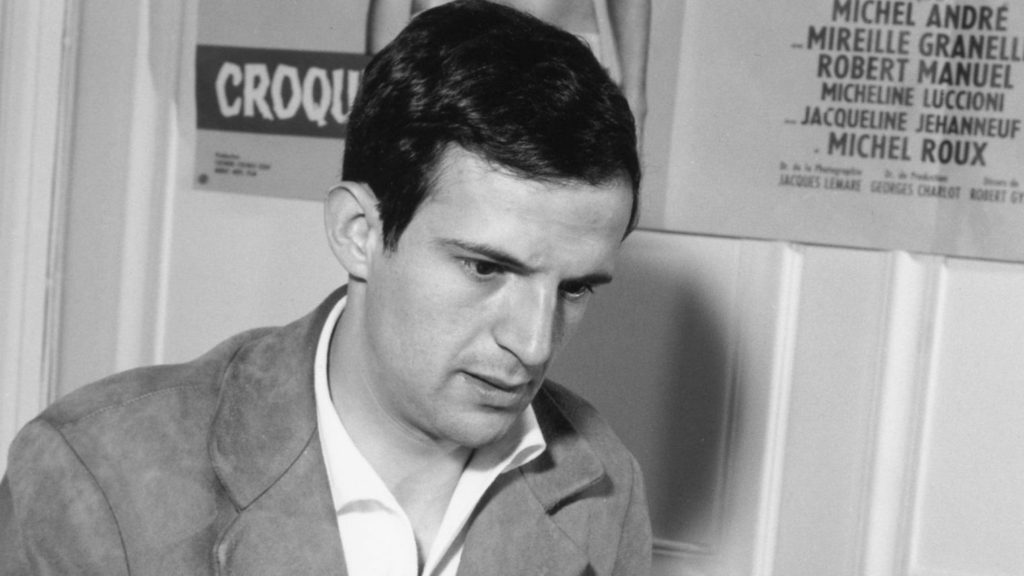
director Truffaut
Film critic-turned-filmmaker François Truffaut kicked off La Nouvelle Vague (“The French New Wave”) with his first full-length feature, a semi-autobiographical film about a mischievous Parisian boy whose energy and imagination gets him into constant trouble with his parents and teachers. More rebellious than actually delinquent, his (mostly) innocent, youthful pranks nonetheless have a devastating effect that essentially robs him of his childhood.
Now, if I were to compile a list of what I considered to be the top 10 movies of all time—and I won’t by the way, so don’t worry—I’d probably have to include The 400 Blows within the top 5. Why? Well, in most movies about children or childhood the “kid” is usually played by that most unnatural and irritating of creatures—“the child actor”—whose actions, decisions, and behavior are guided and interpreted by film technicians who have long-since forgotten what it was actually like to be a kid. Make ‘em “cute,” they cynically reason, and you’ll have the audience slavering for more.
Which makes The 400 Blows all the more devastating ‘cos here’s an actual flesh-and-blood kid—a screen synthesis of the actual life experiences of a director, François Truffaut, with the personality of an actual Parisian street kid, Jean-Pierre Léaud—who’s continually shown on the losing end of it all. Antoine lies a little, he smokes a little, he steals a little; he ditches school with his best friend, René (one of my favorite screen friendships, by the way), runs away from home a couple times, and ends up in Juvie. A bit depressing? Maybe. But still, it’s entirely real.
…
Once, in an interview, Truffaut described his technique in this film as “autobiographical; and what isn’t is biographical, meaning everything is true.” With his very first movie, Truffaut, who like Antoine Doinel had apparently spent his entire childhood evading the truth, became possibly the greatest filmmaker of his generation by utilizing an obsessive interest in film to make something true and honest out of his childhood. (A dang good point of artistic departure for one’s first movie, I should add.)
There’s simply not a false moment in this film. Some nice examples: Antoine, unable to come up with an excuse for missing school the day before, blurts out that his mother has died (she hasn’t) with a look of wounded indignation, like he’s had the lie literally wrung out of him; Antoine and his friend Rene fly down the steps of the Sacré-Couer Basilica with their arms stretched out, shouting “Bonjour, Madame!” to a passing cassock-clad priest; Antoine, held in a police cage while awaiting the prison van, pulls the collar of his turtle-neck sweater over his mouth and folds his arms over his chest, resigned to his fate… I could go on and on–and I might add that I chose this particular movie ‘cos when I first saw it I recognized so much of myself in Antoine and his experiences. As do many viewers. I credit this entirely to Truffaut’s compassionate and ultra-realistic technique.
Doinel and his romantic misadventures—directed by Truffaut, and enacted by Léaud—went on to grace 3 more hilarious movies (1962’s Antoine and Colette , 1968’S Stolen Kisses, 1970’S Bed and Board), along with a cinematic PostScript (the appropriately-titled Love on the Run, from 1979)—but, sadly (or happily, perhaps), Antoine doesn’t progress very much further than the freeze-frame at the beach–in close-up, looking directly at the audience–which (famously) ends the movie. Always running, even when he has no place to go!
But, I dunno, I kinda take comfort in that.
II. ORDET
(1955, Denmark, dir. Carl Theodor Dreyer)
“…it will cost you but one word.”
::SPOILERS ABOUND! *And it is here that I should perhaps note that this short article will be dealing, in its near-entirety, with the most SPOILER!-moment worthy of this film, and perhaps any film. If this thought disturbs you, please navigate away. On the other hand, if you are of an adventurous spirit, and can intuit that sometimes in art, as in life, it is “more about the journey than the destination,” please do read on!::
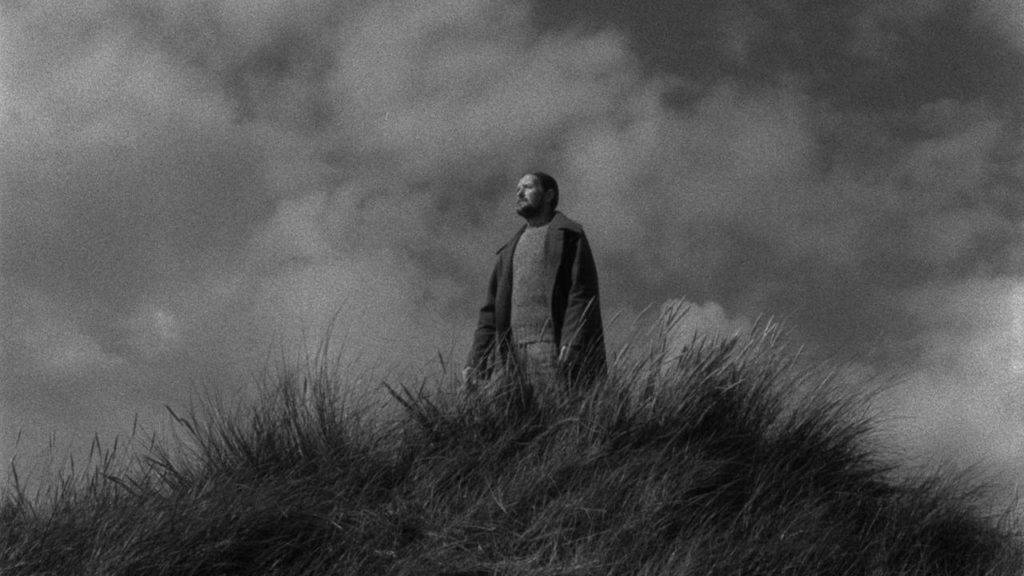
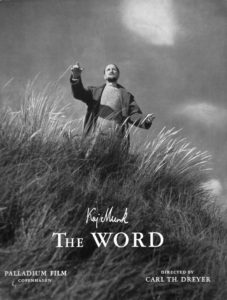 “20 August 1925 Addendum to 14 August 1925 Certificate of Death, INGER BORGEN (Birgitte Federspiel), HOUSE-WIFE, Register of the Parish of Husby”…
“20 August 1925 Addendum to 14 August 1925 Certificate of Death, INGER BORGEN (Birgitte Federspiel), HOUSE-WIFE, Register of the Parish of Husby”…
Having found no discernible cause of death on the evening of 13 August 1925 beyond exhaustion and complications due to child-bearing, this medical practitioner hereby rescinds the death certificate issued on 14 August 1925, admitting nothing beyond that which his science teaches him. Upon subsequent physical examination the patient appears in perfect health. – C.J. Houen, M.D. (Henry Skjaer)
“21 August 1925, private diary of Pastor Kaj Munk (Ove Rud), Parish of Husby”…
Science, medicine, philosophy, reason—these are but tools for greater human understanding. Balance must be struck between them, lest one gain in ascendancy over the others. Faith must lead the way, but God’s laws must provide that balance.
“22 August 1925 issue, vol. XII of ‘Husby Folkeblad,’ pg. 20, bottom, ‘Nekrolog’”…
My faithful wife and our dearly beloved mother, daughter-in-law, and sister-in-law INGER BORGEN has been miraculously restored to the bosom of her family at Borgen’s Farm in steadfast faith in her divine savior JESUS CHRIST, observed this 20th day of August in the year of our Lord nineteen hundred and twenty-five. – MIKKEL BORGEN. (Emil Hass Christensen) Morten Borgen. (Henrik Malberg) Anders Borgen. (Cay Kristiansen) Lilleinger. (Susanne Rud)
‘Why all this commotion and wailing? The child is not dead but asleep.’ But they laughed at him… He took her by the hand and said, ‘Talitha koum!’ Immediately the girl stood up and walked around. At this they were completely astonished.’ (St. Mark V. 39-40, 41-42)
Our dearly beloved mother and sister-in-law INGER BORGEN has come back to us. – Hand-in-Hand, JOHANNES BORGEN (Preben Lendorff Rye) and MAREN. (Ann Elisabeth Rud)
…
Well, admittedly, this one’s a challenge. Danish master filmmaker Carl Theodor Dreyer’s 3rd film in as many decades—he had been quite prolific in the 1920s as a silent movie-maker, though his pace slackened off considerably thereafter—had, according to the Criterion company’s website, been actively engaged in bringing his vision of Danish priest Kaj Munk’s 1925 play “Ordet” (or “The Word,” first staged in 1932) since he first saw it performed in Copenhagen in 1933.
From 1928 to 1964, the period of Dreyer’s “masterworks” included 1928’s The Passion of Joan of Arc, which dealt thematically with martyrdom and salvation, 1932’s Vampyr, which dealt with the supernatural and eternal damnation, and 1943’s Day of Wrath, dealing with religious dogma and the spread of terror during the medieval witch hunts. Yes, Dreyer was a “heavy” filmmaker. But I imagine even audiences familiar with his previous body of work must’ve been at least a little surprised when he used the magic or faith or whathaveyou of filmmaking to raise a farm wife from the dead.
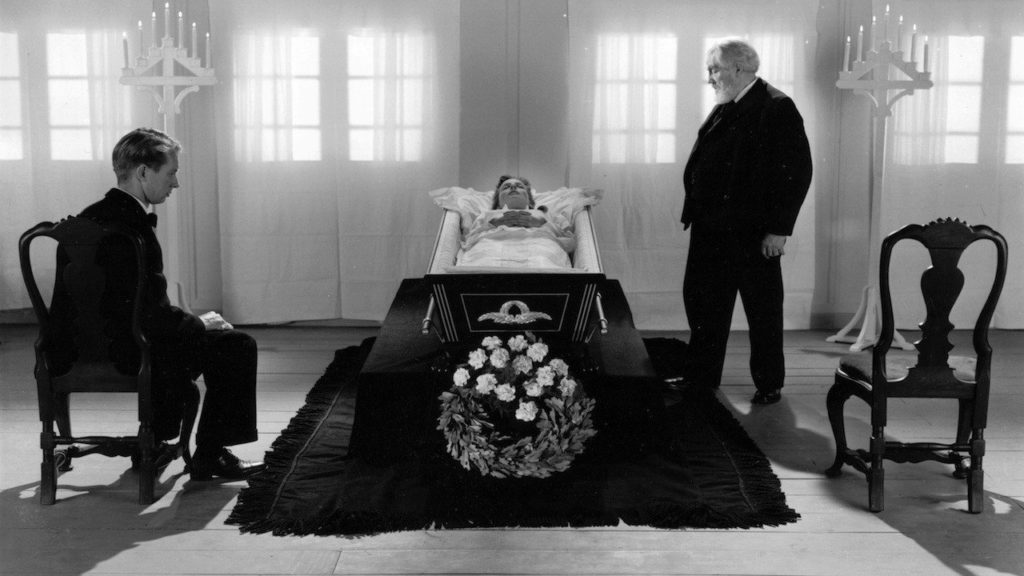
And it’s a slow build. (Which is an understatement.) Dreyer was nothing if not, and I’m being charitable in this description, a “deliberate” director. And that extends to pacing, staging, and every tool available to him as a filmmaker.
Despite, again according to the Criterion website, cutting at least 2/3rds of the dialogue from the original play, Ordet’s 2+ hour running-time is carefully drawn-out, with its mise-en-scene the very definition of “precise”–entire scenes drag-on in 5, 10 minute long single-takes; the camera slowly, stealthily glides about his light & shadows-sculpted film space, capturing each nuance of his characters’ physical attitude and moods, revealing their inmost thoughts without, often, said characters having to say a word. (Or THE Word, as it were.)
And, astonishingly, in a film whose chief aesthetics are carefully-staged, almost static compositions and balanced, drawn-out long-takes, there’s only a handful of true Hollywood-style close-ups in the entire movie!
…
And I know I’ve been going on about the history and technique of the movie here, but–apologies in advance–mine is an intensely personal viewing of the subject matter portrayed and Dreyer’s manner of portraying it. No matter how many times I see Ordet, and I’ve seen it at least a dozen times by now, The Moment the movie has been slowly building towards never ceases to surprise me.
Every dang time.
I consider myself a great many ‘a-prefix’ words (agnostic, apolitical, asexual, apathetic…) but even I cannot deny the power, poetry, and mystery of true artistic expression. Turn down the lights, cast a few shadows on the wall, and even the most doubting among us has the potential to suspend his or her disbelief for a couple hours. Ordet troubles and complicates and disturbs my worldview. And I suppose that’s the best praise I can give this movie, or any movie.
III. WILD STRAWBERRIES
(1957, Sweden, dir. Ingmar Bergman)
“The punishment is loneliness.”
“If I have been feeling worried or sad during the day, I have a habit of recalling scenes from childhood to calm me. So it was this evening.”
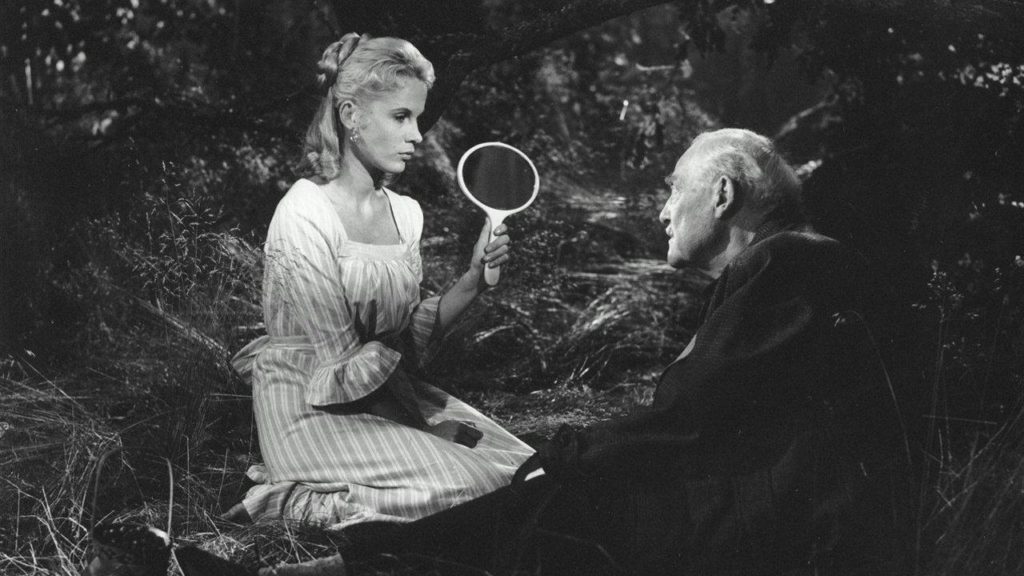
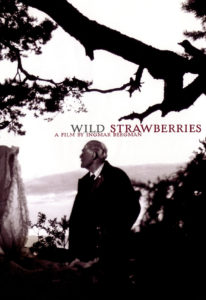 (*NOTE: The Swedish summer lasts only 6 weeks through July and August and, during this period, families repair to their summer cottages where wild strawberries grow. Mixed with fresh milk, the latter is a traditional Swedish summer delicacy, especially for children.)
(*NOTE: The Swedish summer lasts only 6 weeks through July and August and, during this period, families repair to their summer cottages where wild strawberries grow. Mixed with fresh milk, the latter is a traditional Swedish summer delicacy, especially for children.)
“Dagens Nyheter,” 19 October 1957…
Dr. ISAK BORG (Victor Sjöstrom), Professor Emeritus, Doctor Jubilaris, died peacefully at home on the evening of the 17th, tended in his final illness by his faithful servant of 30 years, Agda (Jullan Kindahl). He was 78 years old.
Professor Borg was born on 14 July 1879 in Uppsala to Erik Borg, a minister in His Majesty’s civil service, and Karin (nee Ekdahl), a retired stage actress (Naima Wifstrand). After receiving his doctorate in 1907 from Lund University, Borg toiled as a rural practitioner for 7 years in his native Uppsala before gaining a commission for research at Karolinska Hospital in Stockholm, where he rose to the position of chief medical officer. His discoveries over the next 30 years pioneered the field of bacteriology in Swedish medical research. He retired from this position in 1947, continuing at the hospital in an advisory capacity until his death.
Professor Borg is preceded in death by his father, 9 siblings, and his wife of 20 years, Karin (nee Akerblom; Gertrud Fridh). Professor Borg is survived by his mother in Uppsala; his son, Dr. Evald Borg (Gunnar Bjornstrand), and daughter-in-law, Marianne (Ingrid Thulin), both of Stockholm; and a sister-in-law, Mrs. Sara Borg of Fårö (Bibi Andersson).
After being awarded Doctor Jubilaris last summer at Lund University, where he had received his doctorate 50 years earlier, Professor Borg commented to the head of the selection committee that: “It was a life.”
…
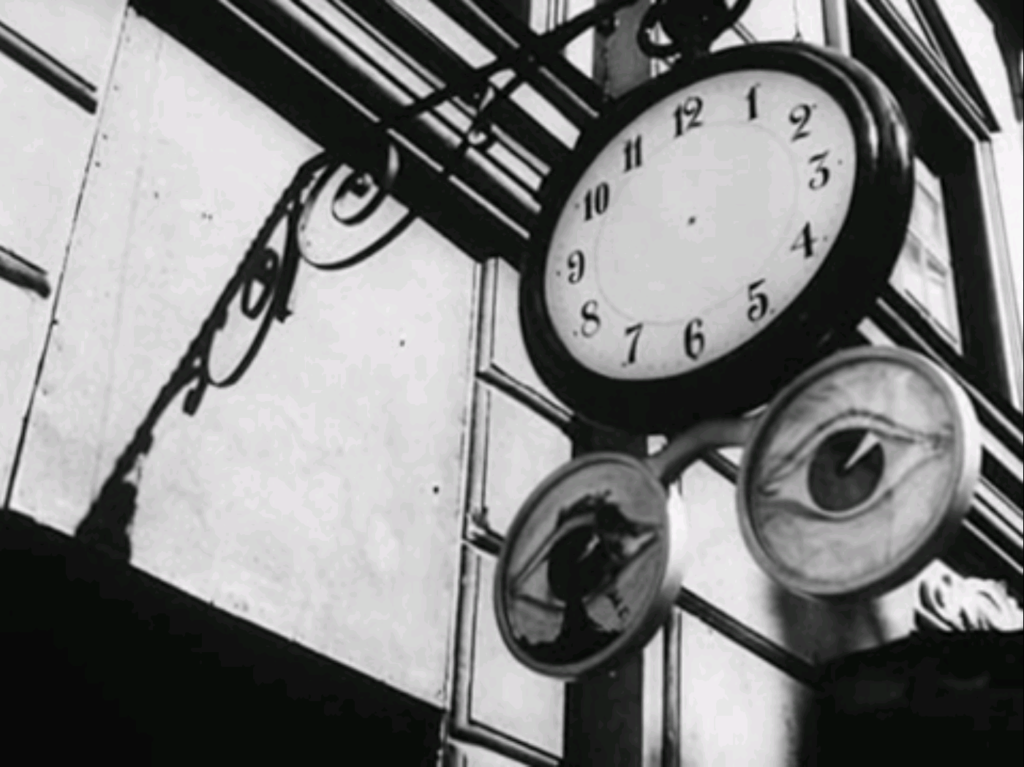
Inspired by a terrifying dream of death—featuring a bleached-white empty street, a faceless man waiting for a bus, a clock without hands, a broken wheel, and a horse-drawn hearse crashing repeatedly against a lightpost (ah, symbolism!)—an elderly doctor decides to travel by car, accompanied by his daughter-in-law, and later joined by three youthful travelers, through sites of his childhood on the way to receive an honorary degree from his alma mater.
As a sort of sentimental journey taken towards the end of his life, the good doctor steps briefly back in time to literally re-view scenes from his past: particularly, the seaside cottage his large extended family spent every summer “where the wild strawberries grew.” Through dreams, visions, and reflections—some pleasant, but more, um, not so—he comes to peace with the mistakes of his past and the short-comings of his personality. The film’s final images of an old man smiling in his sleep as he recalls once finding his parents sitting by the shore—his father fishing, his mother looking on; both waving back to him—is simple and heart-breaking. THE perfect ending…
For many, Ingmar Bergman IS Swedish cinema. Following the success of his international breakthrough, The Seventh Seal in 1956, Wild Strawberries solidified Bergman as the great filmmaker of his generation. A horribly reductive generalization to be sure, not to mention a disservice to all the great Swedish filmmakers who preceded him (including the star of this particular movie, Victor Sjöstrom), but think “stark photography and bleak storylines featuring tormented, introspective characters meditating on the nature of being” and I imagine such a description sounds very Swedish and, by extension, very Bergmanesque.
…
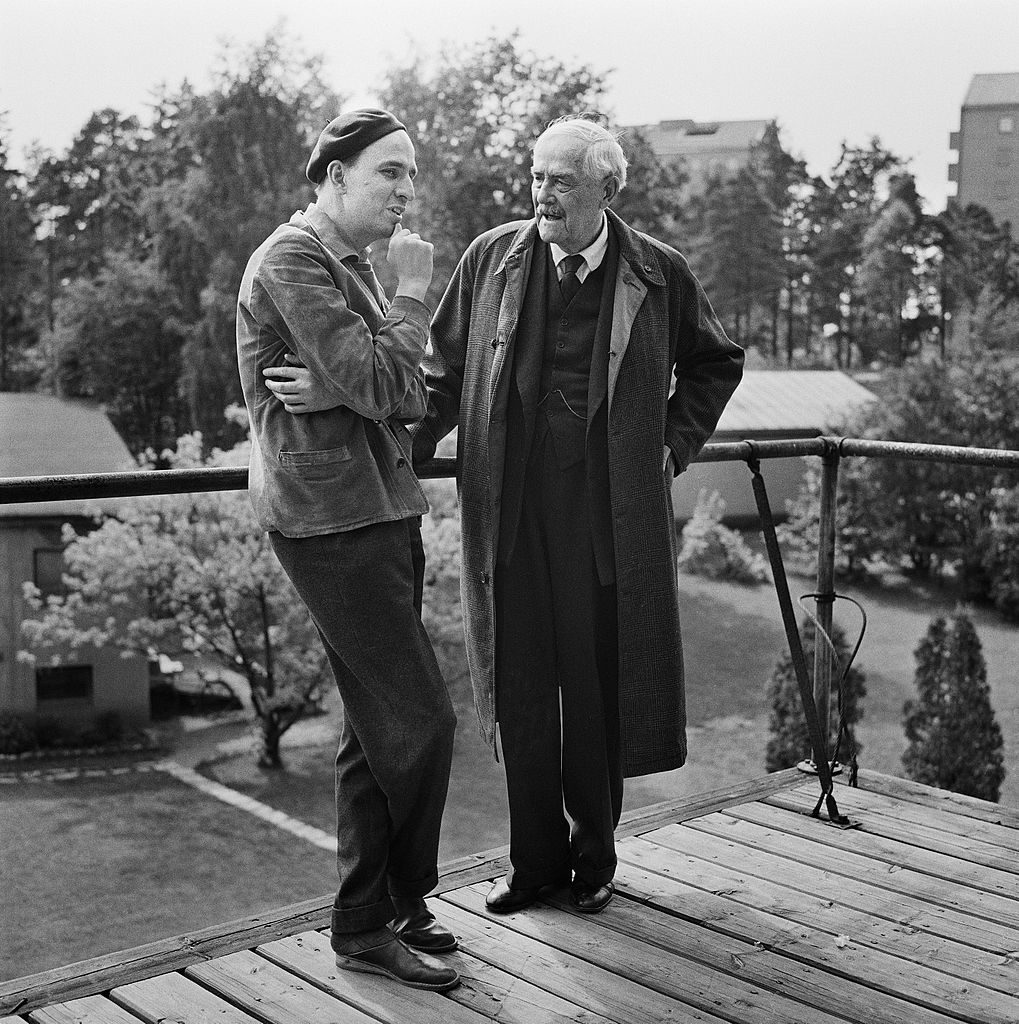
director Ingmar Bergman with actor Victor Sjostrom
Wild Strawberries is something different: simple, but devastating. Bergman was nothing if not a “confessional” filmmaker, using the medium to explore problems of a highly personal nature, and as such, the autobiographical elements of his storyline and characters extend here to a vividly realized and realistic style. Basically, the very soul of his character, Dr. Isak Borg, is laid bare on the screen for 91 minutes through dreams, visions, voice-over narration, and dialogue; ably abetted by crisp, high-contrast photography, pretty scenery, and alternately lovely and terrifying set-design. All these tools of filmmaking lend support to 1, 2, 3+ minute close-ups of the famed profile of Victor Sjöstrom,—still marvelous at 78 years of age—taking in everything before him and alternately registering shock, dismay, nostalgic reverie, and, ultimately, joy. Again, simple filmmaking, but devastating.
Like the title of Bergman’s autobiography, “The Magic Lantern”, it’s all quite enchanting; you literally cannot look away. A perfect movie to watch whenever you have been “worried or sad during the day.” Among his deep catalogue of bleak, depressing, and ultimately hopeless characters, storylines, and themes, Wild Strawberries is one of the few Bergman movie that gracefully ends on a note of hope.
IV. ANDREI RUBLEV
(1966, 1969, 1971; USSR, dir. Andrei Tarkovsky)
“’For now we see as through a glass, darkly; but then face to face: now I know in part; but then I shall know even as also I am known.’”
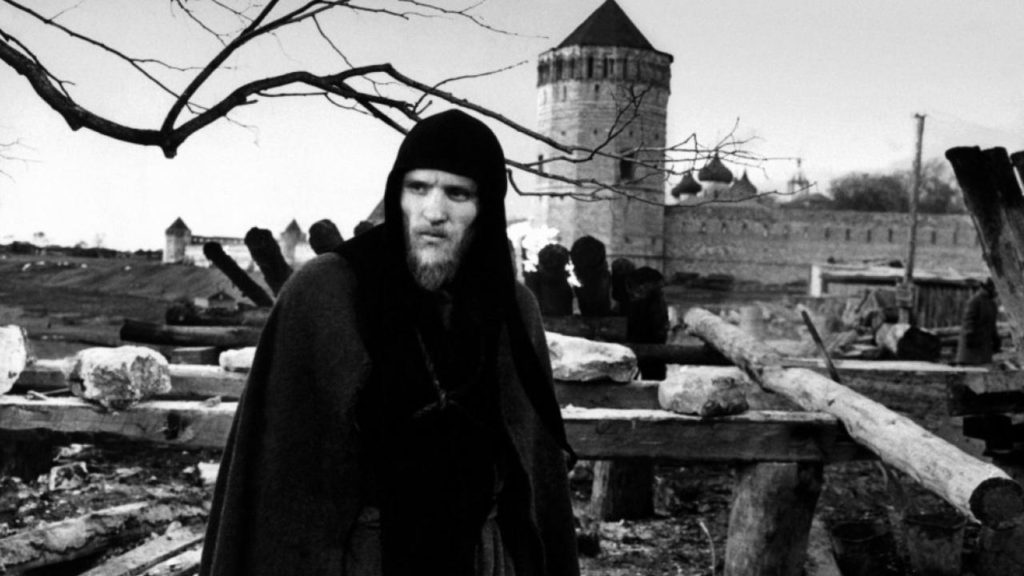
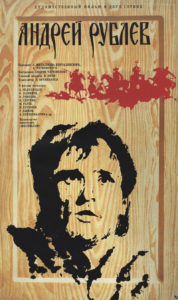 Andronikov Monastery of the Savior, Yauza River, Fr. KIRILL (Ivan Lapikov); 1430 A.D.
Andronikov Monastery of the Savior, Yauza River, Fr. KIRILL (Ivan Lapikov); 1430 A.D.
The Lord has seen fit to take Our Brother, ANDREI RUBLEV (Anatoly Solonitsyn), observed this day in the Year of Our Lord, 1430.
I, KIRILL, have toiled in obscurity these many years while the Hosannas have fallen upon my great comrade, whose sacred work has adorned every great monastery and cathedral in Our Russia.
30 winters ago, ANDREI, DANIL (Nikolai Grinko), and I wandered the wilds between Our Cloister and the Great Metropolitan Center of the Warring Boyar Princes (Yuriy Nazarov), searching for inspiration in the roadside inns and way-stations. Among us, it fell to Our Brother, ANDREI, to be called to Moscow 22 years ago by THEOPHANES, the Greek (Nikolai Sergeyev) to assist at The Cathedral of the Annunciation. Within 3 summers, ANDREI’s Guild increased threefold to depict The Last Judgment as a Great Feast at the Assumption Cathedral in Vladimir. 15 years of silence followed the Tartar Raids, but inspiration struck its ringing knell in the bowels of the earth, where a young man, BORISKA (Nikolai Burlyayev), in his greatest extremity, cast a bell from the loamy clay. ANDREI’s Passion at the Trinity Monastery was the fruit of that inspiration.
It is now left for me, KIRILL, to copy the last remaining books of the Scriptures which, God willing, the brief remaining time of my now 55-year span will afford. My penance will be complete, and the name of Kirill will be forgotten, but the name of ANDREI RUBLEV will ring through the ages.
Praise God.
…
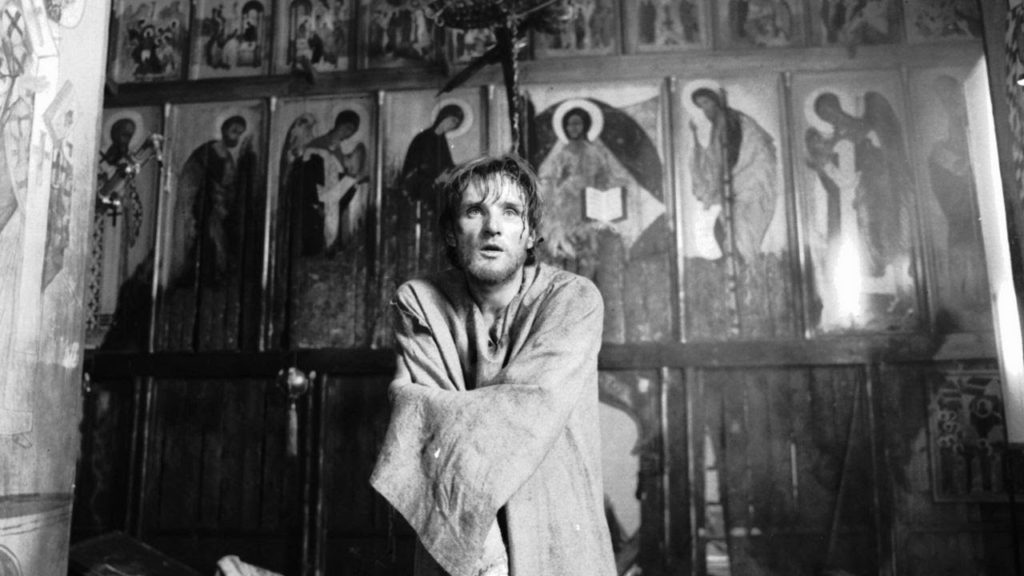
And so ends this series of write-ups on, I’d wager, possibly the most challenging narrative film ever made. “Difficult, but ultimately rewarding” is how many viewers might characterize a film by Soviet filmmaker, Andrei Tarkovsky; not easy to watch, initially, but the spell of which lingers long after its final images of medieval icons and grand frescoes prove vastly unequal to one’s 21st century TV set, and whose appropriately accompanying soundtrack threatens, in its overwhelming intensity, to blow out one’s tiny little speakers. Yup, friends, this one’s a doozy.
If one thing is known about the historical figure of Andrei Rublev it is that he lived in one of the most turbulent periods in Russian history in a country that is particularly famous for its, um, particularly turbulent periods. Here, the struggles among the Boyar Princes jockeying for individual power—realized in the latter part of the century when a Prince Called Ivan simply eliminated all his rivals to become Russia’s 1st Tsar, Ivan the Terrible—becomes the dramatic Passion Play of Tarkovsky’s epic drama.
Will Andrei, crouching in the center of a grand cathedral, the walls bare and unadorned, find inspiration for his scene of Last Judgment as the invading Tartar hordes literally batter down its gates? Can he live as an artist in a country where two brothers, Boyar Princes, massacre and deplete each other’s forces on a daily basis—and in which innocent bystanders have their brains smashed out against trees, or their eyes gouged out, are imprisoned for telling a few jokes, or (most famously/infamously) have hot lead poured down their throat for a moment of justified defiance*? How can Andrei justify being an artist, or even a servant of God, amidst such overwhelming horrors?
(*And no wonder this movie was repeatedly banned in its country of origin—see multiple release dates above—and its director eventually exiled!)
“Speculative Biography” seems to be a good point of departure for Tarkovsky’s vision of Andrei Rublev as, in fact, not very much is known about the life and doings of the great 15th century icon painter. Even his greatest attributed work, that of “The Trinity” at the Tretyakov Museum in Moscow, has yet to be fully authenticated, and his remaining work has been identified only through anecdote and legend. For an artist who has been referred to as “The Soul of Russia,” Andrei Rublev is as mysterious a figure in his Mother Country as, well, God is in his Heaven.

Rublev’s “Trinity” ca. 1411
And I suppose the analogy, tip-toeing around blasphemy as it does, is actually somewhat appropriate. One thing that rings crystal clear through its 205-minute running time—quite literally, as the story section of the film ends with a ringing bell of salvation, during which a small village is spared a bloody massacre by a young bell-maker’s first success—is the central importance of the artist in Russian history and society. Not really knowing how it relates to the theology of the Eastern Orthodox Church, it is easy to speculate, solely on the evidence of this film, that artistry and creative expression are considered synonymous with divine inspiration; God expressing Himself through his divine instruments. In other words, Artistry as being next to Godliness.
…

Slow-moving, meditative, poetic; it’s not a movie to be taken lightly, but for those willing to challenge themselves, it’s not one you’ll be likely to forget. It’s one of those movies that begs for post-watching commentary and discussion as each of its sections can be picked apart and dissected endlessly. I haven’t even addressed the stylistic aspects of the movie, but suffice it to say that Tarkovsky’s vision is beautifully-realized with scenes of nature and life and creation balancing the brutal and violent realities of the period he’s depicting. (In fact, Bergman’s The Seventh Seal aside, this is the most indelible depiction of medieval Europe I’ve yet seen on film.)
Again, it’s a doozy. That’s all I can say, really.
An Epilogue: ERASERHEAD
(1977, AFI, dir. David Lynch)
FUN FACT: The original screenplay for the above-titled film was a mere 21 PAGES, but the making of that screenplay stretched out over 5 YEARS…
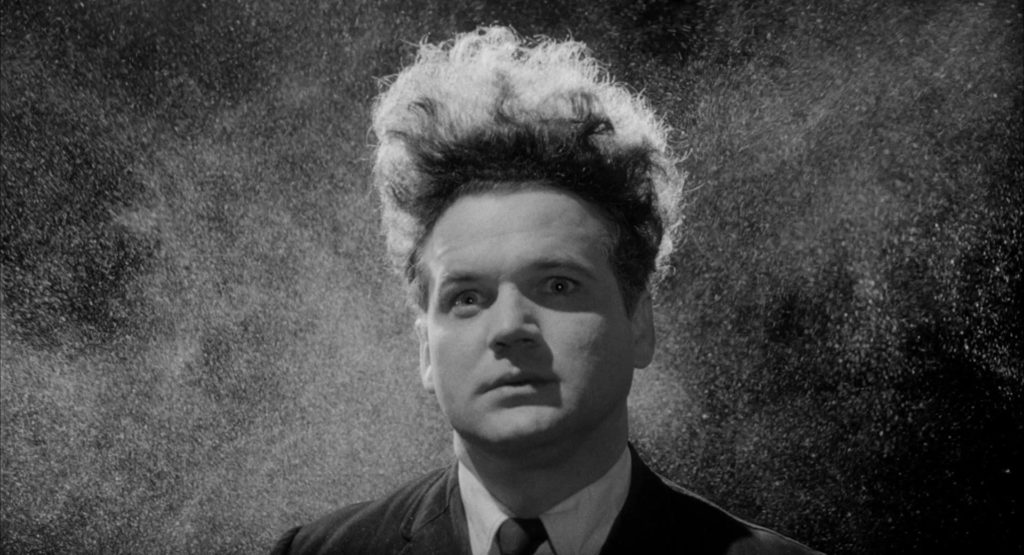
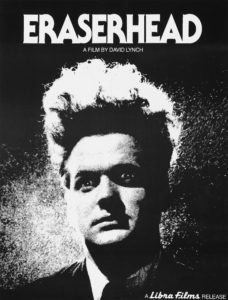 In a post-industrial wasteland full of smoke and grinding gears lies a decrepit building in which the soft strains of Fats Waller on the jazz organ can be heard across a floor-checkered lobby, up a bulb-flickering elevator, down a dim hall, and through the door of an apartment numbered “26″. In the apartment, a man, whose thick, curly hair points UP, sits on a bed, over which hangs a picture of an atomic explosion. Beside the bed, a table, on which a potted plant sits—without the pot—over a spilling pile of dirt. The man crosses the room to a desk and opens a drawer. A torn photograph and a penny lie within. Tossing the penny into a glass of water, the man picks up the pieces of the photograph, fits them together, and says one word: “Mary.” Just then, a hiss of steam escapes the radiator upon which the man has placed his socks to dry. The man glances over, focusing on a light shining between two bars of the radiator, and ‘sees’, somewhere between seeing and not, a theatre. He is inside the theatre, now, and sitting in the audience. A beautiful woman with a beehive hairdo and puffy, vein-distended cheeks steps shyly onto the stage. She is wearing a white party dress. She is singing a song which he does not recognize, but in which he can pick out the repeated refrain, “in heaven, everything is fine.” The man shakes his head, blinking, and is sitting back on his bed in his small room. The light from inside the radiator has gone out. The man straightens his tie, takes one last look at the pieces of the photograph, and stands up to leave. He has a dinner to attend.
In a post-industrial wasteland full of smoke and grinding gears lies a decrepit building in which the soft strains of Fats Waller on the jazz organ can be heard across a floor-checkered lobby, up a bulb-flickering elevator, down a dim hall, and through the door of an apartment numbered “26″. In the apartment, a man, whose thick, curly hair points UP, sits on a bed, over which hangs a picture of an atomic explosion. Beside the bed, a table, on which a potted plant sits—without the pot—over a spilling pile of dirt. The man crosses the room to a desk and opens a drawer. A torn photograph and a penny lie within. Tossing the penny into a glass of water, the man picks up the pieces of the photograph, fits them together, and says one word: “Mary.” Just then, a hiss of steam escapes the radiator upon which the man has placed his socks to dry. The man glances over, focusing on a light shining between two bars of the radiator, and ‘sees’, somewhere between seeing and not, a theatre. He is inside the theatre, now, and sitting in the audience. A beautiful woman with a beehive hairdo and puffy, vein-distended cheeks steps shyly onto the stage. She is wearing a white party dress. She is singing a song which he does not recognize, but in which he can pick out the repeated refrain, “in heaven, everything is fine.” The man shakes his head, blinking, and is sitting back on his bed in his small room. The light from inside the radiator has gone out. The man straightens his tie, takes one last look at the pieces of the photograph, and stands up to leave. He has a dinner to attend.
…
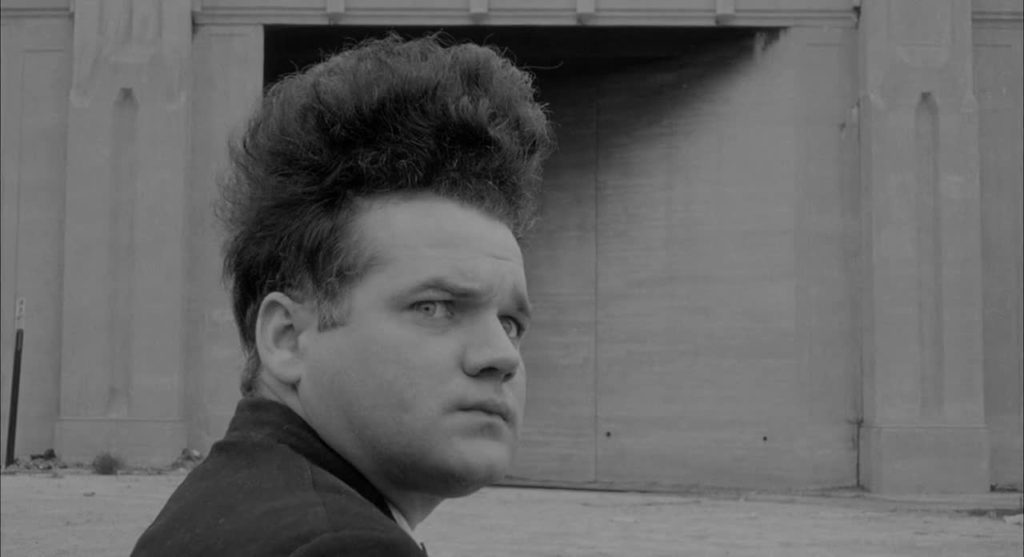
David Lynch’s first feature is an indescribable blend of horror, science fiction, surrealism, expressionism, black comedy, absurdity… but, to me, it’s simply a unique and riveting viewing experience. The ‘plot’, baldy told, concerns the travails of a factory worker (John Nance) who has impregnated a neighbor (Charlotte Stewart) and is left to care for the ‘result’—a hideous mutant wrapped in bandages—when the girl (quickly) leaves him.
Plot disposed of (phew!), the movie’s much more of a visual poem, a series of haunting images (and sounds—the film’s ‘sound design’ credit is an important one…) that, in viewing, is as close to dreaming as one can get while awake. And I know this might sound rather abstract, but any filmmaker that has managed to put up on the screen EXACTLY what he saw projected in his brain has accomplished something rather special. It’s called ‘a vision,’ and whatever you might think of it, David Lynch certainly has one.
…
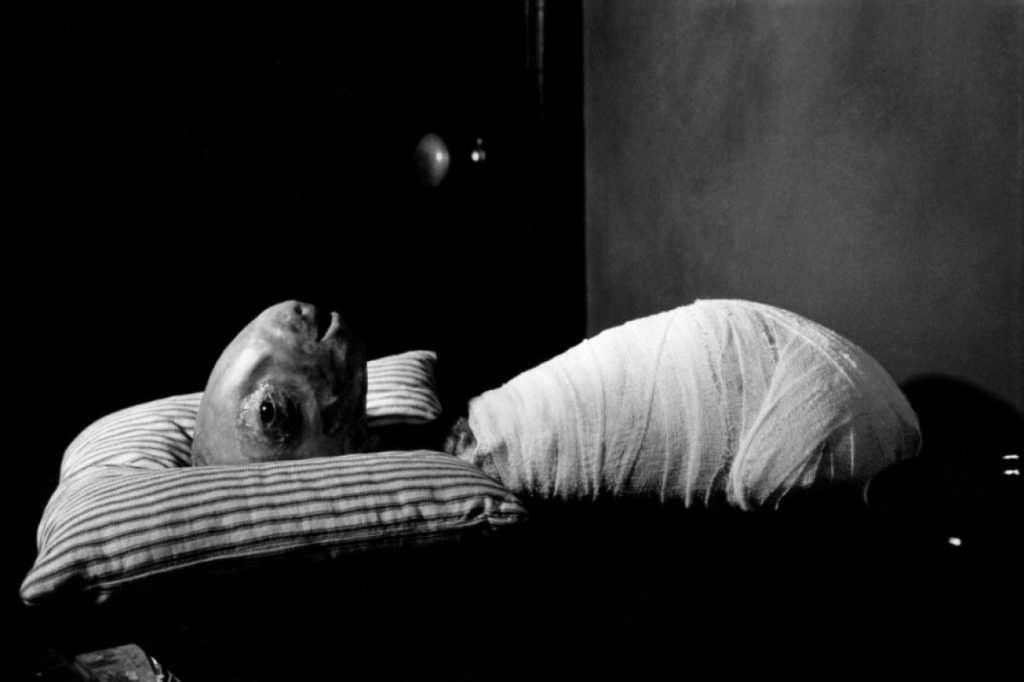
But more on that in a bit.
A few weeks ago, in my capacity as a humble bookseller, a rather expensive blu-ray collection released by the Criterion Company floated across the buy counter at my place of employment. Someone had brought in By Brakhage, an anthology of short films made between 1952 – 2003 by the late experimental filmmaker, Stan Brakhage. Non-narrative cinema is a particular weak spot in my personal film viewing, so I put the item aside to check out—an employee perk that helps in part to make up for one’s low wage *ahem!*—at some point in the distant future.
This got me thinking, though: why must we, as common ordinary moviewatchers, demand a good story? What precisely is the value of story well told—one that we usually forget immediately upon walking out of the theater, by the way—when it is in fact the images, the atmosphere, indeed, the very world and ‘feeling’ that a movie creates—an alternate reality, if you will—that sticks with us the longest?
Rhetorical though these questions might be, and you certainly don’t have to agree with them in the least, this Slightly Obsessed Moviewatcher should now state a preference for movies with “moments”–and “moments” not entirely connected to the sometimes slavish sequence of ‘events’ that conventional narrative filmmaking often demands. Though it helps a lagging attention span for viewing material to ‘make sense’ as it unfolds before a viewer’s eyes, I’d argue that there can be poetry and mystery in images and visual sequences which sometimes do not.
Which brings us back to Eraserhead. From the alternately hilarious and terrifying scene where our drab hero, Henry, “meets the in-laws”—complete with deadpan, non-sequitur dialogue, a (possibly) dead grandmother, and blood-spewing “little chickens” served up for dinner—to the titular nightmare sequence where our poor, beleaguered Henry literally ‘loses his head’ and has it ground up through machinery into erasers for pencils, David Lynch’s dream-vision is chock-full of such sequences and images–“moments”, again–that may not fit together in a causal, rational manner, but rather gain immeasurable power and substance upon being filtered through their viewers’ subconscious.
…
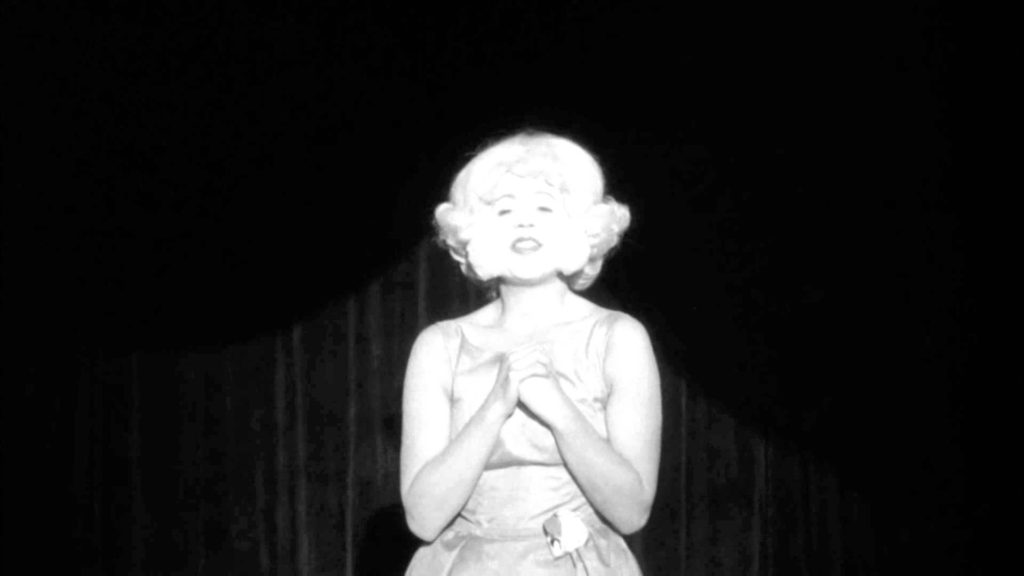
But, again, rather abstract, what? “Movies must have meaning!” goes the clamorous throng of the moviegoing public.
Loathe as I am to do so, then, my own personal take on the meaning and import of David Lynch’s Eraserhead:
INTERPRETATION!
Everyone’s gonna have one, of course—understandably, it’s just the kinda movie to invite ‘em—but, personally, I’d make the case that the key to the film lies in its most famous image…
Immortalized on best-selling T-shirts and college dorm room posters, it’s a close-up of Our Man With The 5-inch Tall Hair-do standing in the wreckage of interplanetary destruction, with fragments of his blown-apart ‘world’ glittering like stardust in the darkness behind him. In this moment, the man’s expression suggests a combination of shock, awe, and—darewesay?—epiphany. The screen turns to white, the audio track ROARS to a fever pitch of sound & fury (the seats in an old theater where I first saw this movie visibly rattled & shook) AND, suddenly, the puffy-cheeked Girl from Henry’s dreams/visions—who performs that song inside his radiator titled “In Heaven (Everything is Fine)”—springs forward from the blinding whiteness and wraps our misbegotten soul in all-encompassing embrace.
Doesn’t make a lick of sense, of course, but it’s certainly one of the most powerful and deeply FELT moments I’ve seen on-screen. It adds a profoundly spiritual dimension to the film that is (understandably) often overlooked. I’d further add that there are very few convincing depictions of “salvation” in the history of cinema and, in this respect, Eraserhead succeeds where so many so-called ‘religious’ films and overblown, pseudo-epics fail. Specifically, that even in a world of overwhelming brutality, ugliness, and horror there is still a possibility of touching something of the divine, and receiving something like grace.
Now… in contrast to that other great movie released in 1977–the year I was born, by the way–I may not necessarily believe in “a mystical energy force that surrounds and binds the universe” (paraphrasing), and by extension a guiding intelligence to matters as mammoth as the outcome of war or as mundane as a sparrow’s fall, but I do believe in the potential for sequential images projected at the rate of 32 frames per second to shock, amaze, and enrapture their viewers into moments of acceptance of and belief in something quite Other. Eraserhead, and particularly this film sequence, is one of the reasons why.
So feel free to take that as a Statement of Faith, if you will.
As such, I thought this would be the perfect movie to end this series of write-ups on. Hope you agree!

